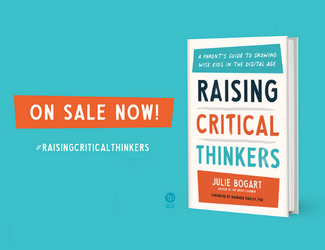Celebrating 20 Years of Brave Writers

Brave Writer just turned 20 and we’re kicking off a NEW podcast season!
Our goal in the upcoming episodes is to focus on your questions, both the questions you’ve been asking throughout this podcasting journey and the questions you haven’t asked yet. Instagram, Twitter, Facebook groups — wherever you have the opportunity to reach out, please send a message to us about what you’d like to learn during season six of Brave Writer.
To celebrate, we also will have a slew of wonderful offers throughout the year. You will find all of these deals in our newsletter, which you can sign up for at this link.
Listen to the Podcast
Show Notes
There must be some enchanted magic to the triad of 20s greeting Brave Writer in this new year. January 2020 is Brave Writer’s 20th anniversary—my little idea that could, which launched itself into the worldwide web at the dawn of the new millennium.
Brave Writer is not the story of an entrepreneur in search of a good idea. Oddly, Brave Writer IS the good idea — creating conditions for children to experience writing as pleasurable, as sourced in their ideas, vocabulary, and passions. My heart from the beginning was to alter the story people tell about writing: that it’s difficult, that it’s a requirement so you’d better get to it, that it’s a skill primarily, that the accuracy of your grammar usage and spelling skills define the quality of your ideas.
Instead, I wanted parents and kids to discover that the writer lives within and that writer is best accessed through play, interest, collaboration, help, and kindness.
Brave Writer: Origins
So January of 2000 saw 25 families discover the power of tapping into their children’s natural writing voices. That June, I was invited to speak at the statewide convention (CHEO) where I would deliver several talks and sell the newly minted The Writer’s Jungle. Cindy Clark and Paula Horton, two local homeschooling friends, offered to help me assemble the parts into the binders that we sold at the convention. In early June, my husband at the time slapped together a website landing page and we registered the name of the company as writingcompass.com.
As I spoke at my first workshop to a room of 150 people, I felt myself caught up in the ideas I was sharing with the audience. I found myself saying with dramatic emphasis: “We want free writers. We want brave writers,” and bam—just like that, I knew. I knew that my company name was “Brave Writer.” I went home to my husband and told him: “Buy bravewriter.com, create the re-direct right away.” The cover of The Writer’s Jungle, you see, already had the wrong website emblazoned across the front.
The books sold 45 copies that weekend and my classes continued to sell out instantly. During the first 3 years, if you didn’t sign up for a class within 5 minutes of registration opening, you didn’t get in. I hired my first teacher that first year and have added teachers to the staff, usually every other year. Today we are up to 26 teachers and over 30 staff members.
By 2002, I launched our second product: The Arrow. The Arrow was my attempt to create a product that would be the “anti-curriculum.” I was tired of these heavy books that you had to work through all year. It occurred to me that we could deliver curriculum by month—a little at a time. This way it would be like getting a magazine. You’d have something new to look forward to each month and wouldn’t worry that you were behind since there was only one month’s worth of work to do at any given time. The first iteration of the product was an email (not even a PDF file). It caught fire quickly and I remember we hit 100 subscriptions within the first year.
My goal with The Arrow was to make it easy to pair literature with Charlotte Mason’s injunction to practice copywork and dictation. As a professional writer, though, I was also interested in craft—why the books we were reading were considered classics or high quality. I knew we needed to look at literary devices, not just the nuts and bolts. I wanted exploration and appreciation for the quality of the writing. Why did it work, why did we love it, why did we cry or feel anger? We have a rule in Brave Writer that anything we teach needs to be taught for “epiphany.” What makes a child go “Aha! I get it”? That’s the rubric for how we write all of our products and classes.
I named this early book companion product The Arrow because, honestly, I was weary of names that had numbers in them (Grade 6, Core 3, Stage 5). I wanted to “shoot language arts help” directly into mothers’ inboxes and the image of an arrow seemed perfect to express it.
We expanded our class offerings into high school level in 2003 and I wrote another language arts product called The Slingshot for those older kids at the same time. By 2005, we added The Boomerang for middle grades. Eventually we retired the Slingshot (though look for a possible reappearance in 2021!) and focused on The Boomerang. Today, The Arrow and Boomerang account for a huge percentage of our customer purchases and we set a new trend in the homeschool market—monthly subscriptions (which we see everywhere now).
In 2005, I released Help for High School. My approach to teaching the essay had been immensely helped by being married to Jon, a literature and composition professor. I pored over his college freshmen text books and blended those techniques with my own and created a program I still believe is cutting edge in our world of writing and home education.
My theory is this: when we learn to write essays, the format is only useful if students first know how to generate insight. We start by stirring up the rhetorical imagination so that our teen writers know how to think about an issue, how to evaluate sources, and how to offer their own interpretation of the ideas. Then we can show them the container that houses argument—the essay. When I teach about high school writing in conferences, it’s not uncommon for adults to finally grasp the architecture of academic writing. I worked as a consultant to help doctoral students polish and write their dissertations before I ever started Brave Writer. I have a knack for academic writing.
Aha!
We’ve seen countless students have breakthroughs when they take our classes and I routinely get emails from those students in college letting me know that, thanks to Brave Writer, they’ve sailed through freshman comp or have tested right out of it! In fact, the way we teach the essay is unique enough that, when I taught as an adjunct professor, my colleagues asked me to do a short training for tenured professors. Then in 2018, I was awarded Xavier’s Alumni Award for Outstanding Contribution to Society for my work in Brave Writer.
I share these details because they are as staggering to me as they may be to you (perhaps more so to me). My background is a Bachelor’s degree in history from UCLA and a Master’s in theology from Xavier University. The ability to write is essential to both degrees and I believe that because I didn’t major in English, I bring a unique perspective as a writing coach. I understand what writing is for—which goes well beyond commenting on literature.
We hired our first round of teachers and trained them as a group in 2011. Since then, we’ve had two staff retreats, several rounds of hires, and trainings for those new instructors. At our last call for teachers, we had 200 applicants and only hired 8 in the end. The process is fairly intense and the results are astonishing. Our instructors have deep job satisfaction because they interact with our students, helping them, guiding them, cheerleading them. Our students eagerly look for instructor feedback because they trust us, they know we will be kind and beneficial.
I also launched a podcast with my son Noah in 2011. What a delight! We didn’t know a thing about promoting it, but we did manage to upload it correctly to iTunes! I traveled to many conferences and experienced a surge of invitations.
Creating a Community
In 2014, we began my experimental project: The Homeschool Alliance. I had been wanting to help parents with homeschooling, not just writing. It has steadily grown in stature each year, with an archive of deeply valuable tools for professional development.
In 2016, a strange thing occurred: live streaming broadcasting leapt into view via Periscope. I finally found a way to connect with my audience. Our Facebook page exploded and we launched a Facebook Group for our community.
We’ve now held four retreats/conferences of our own (3 in Cincinnati and one in Austin, which I attended by the power of Zoom Broadcast, laid up with a broken ankle in Ohio). I consider it a testament to the power of the ideas I share that, when I met two of the women from the Austin conference, they didn’t even remember that I hadn’t been there in person! They thought they had met me.
Perhaps the biggest lesson in all of this growth, however, is how to go from accidental entrepreneur to CEO of a company. In 2017, I attended a two-day seminar called “The Course for Presidents” where I learned all that I didn’t know that I didn’t know about how to hire, how to write contracts, how to set employee standards, how to keep clean books, and how to build a vision worthy of the dedication of your team.
Those guiding principles have helped me stay sane in a very challenging world of work. Having never been on a job interview, you can imagine how unprepared I was for the world of running a company.
I learned three critical lessons in the last few years and I want to share them with you:
1. Write contracts for everything and have a lawyer review them before you sign. Make sure you read the contract aloud with the other party and go over every part of it so that they are clear about what each item means. Don’t assume anyone reads their contract before signing. And if someone signs a non-compete clause, hold them to it. It’s there for your company’s protection.
2. Hire people for a specific job. Do not hire someone and then find work for them to do. Define the role, then hire the best person for that role. If you hire someone who doesn’t work out, let them go. Do not try to find them another fit in the company or you may wind up with a dissatisfied employee.
3. Hire self-starters—people who are competent and capable of doing their jobs because they can and want to.
Resources
- Download a FREE transcript of this episode.
- Get Started with Brave Writer by watching Julie’s brand new video series that helps you understand how to use the program at bravewriter.com/getting-started. Each video is only a couple minutes long and will give you the necessary information to determine which level and which products are just right for your kids. If you have further questions, reach out to our trained staff for personal advice and help: help@bravewriter.com
- Sign up for the Brave Writer Newsletter here.
- Join The Homeschool Alliance


















